February 10th 2023, Rosas.
They lugged their belongings in plastic bags and in shopping bags, in pillow cases and cardboard boxes, and in those weekend break suitcases with the little wheels, utterly useless in the circumstances but what can you do? There was something Biblical about the scene: hundreds of thousands of tons of clay, rocks and boulders, smashed up trees and shrubs, strewn across an area perhaps the size of half a dozen football pitches — a mass of pulverised mountain, the side of an entire mountain, that slithered down into the valley below leaving behind a huge, gaping hole. And across the debris, like a line of ants on a patio, people made their way as best they could, not on a path, that would be far too grand a description, but on a trail hammered out by the feet of thousands and by motorbike riders. It wasn’t until I turned around to look at the spectacle yet again that what I saw then brought it home to me just how incredibly disruptive the landslide has been to those most effected.
“Los muertos, los muertos,” someone shouted, urging those about to cross, who included me, to hold back for a moment.
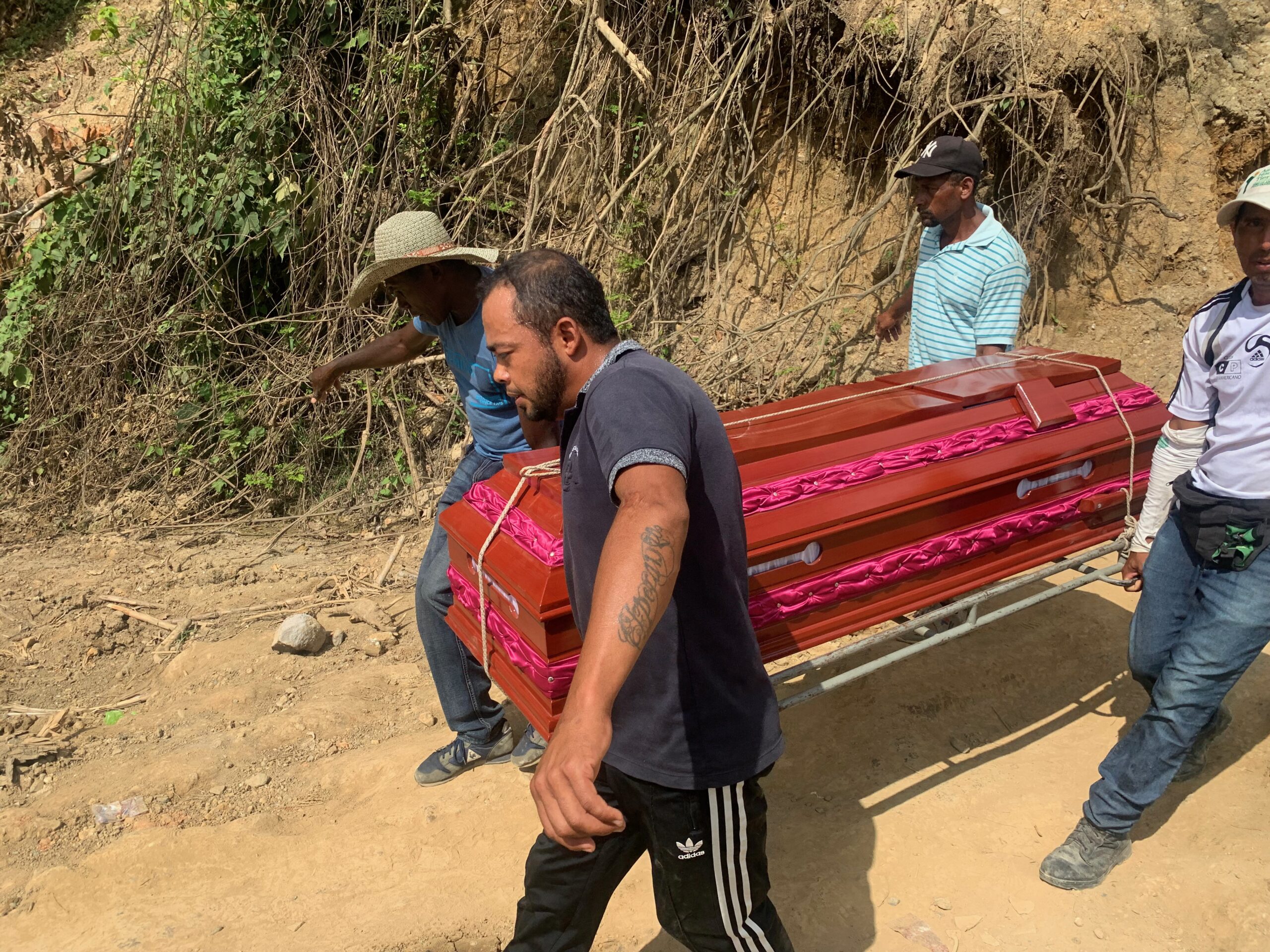
And over a dip in the mound came four men carrying a purple wooden coffin which was roped onto a makeshift metal frame a bit like a stretcher. The pallbearers paused briefly above a small cliff within the debris to let some others cross the makeshift bridge below where they stood — half a dozen thick poles slung across the mini-gorge. And when the people passed, the pallbearers resumed their task, walking over the narrow bridge and down onto terra firma. A waiting hearse, that itself had seen better days, reversed and took delivery of the dead.
I do not know who was in the coffin but it was not a victim of the landslide. Landslide: the word seems so very inadequate as a description of what happened a month ago. Essentially, the side of the mountain between Piedra Sentada and Rosas, on which there were four villages, Parraga Viejo, Santa Clara, La Soledad and Chontaduro, began to shift on January 6th after prolonged exceptional rainfall. The initial warning signs allowed for an evacuation and, to the best of my knowledge, no lives were lost in what ultimately happened three days later. But 64 homes disappeared as the side of the mountain slipped further, folded in on itself and poured down the valley side, leaving 700 people homeless. Drone footage shows the area affected to be about 850 meters wide and 900m long — close to a square kilometer — and at least 500 meters of Ruta 25, the Pan American Highway in this part of Colombia — impassable by four-wheeled vehicles.
I knew I would likely come across some difficulty on Ruta 25 but I really didn’t expect it to be this bad, not after a month. I spent the night in a hotel in El Pilón, about which I will say nothing other than the only reason I stayed there was because I was so exhausted I feared I would nod off on the bike. Setting out in the morning, a huge bridge carried the road over the Rio Patia. The river was fat and meandering. I stopped to take pictures and saw that below, several small clusters of people appeared to be making a living, or trying to, by gathering up mounds of river sand and rocks to be hauled off by trucks. The road wound its way through countryside that was covered by dense tropical vegetation. I had left the hotel so early that some people were walking to work. Women swept the road outside their homes, often making small bonfires of the dry leaf debris. Schoolgirls in neat plaid skirts and knee high white socks waited for lifts.
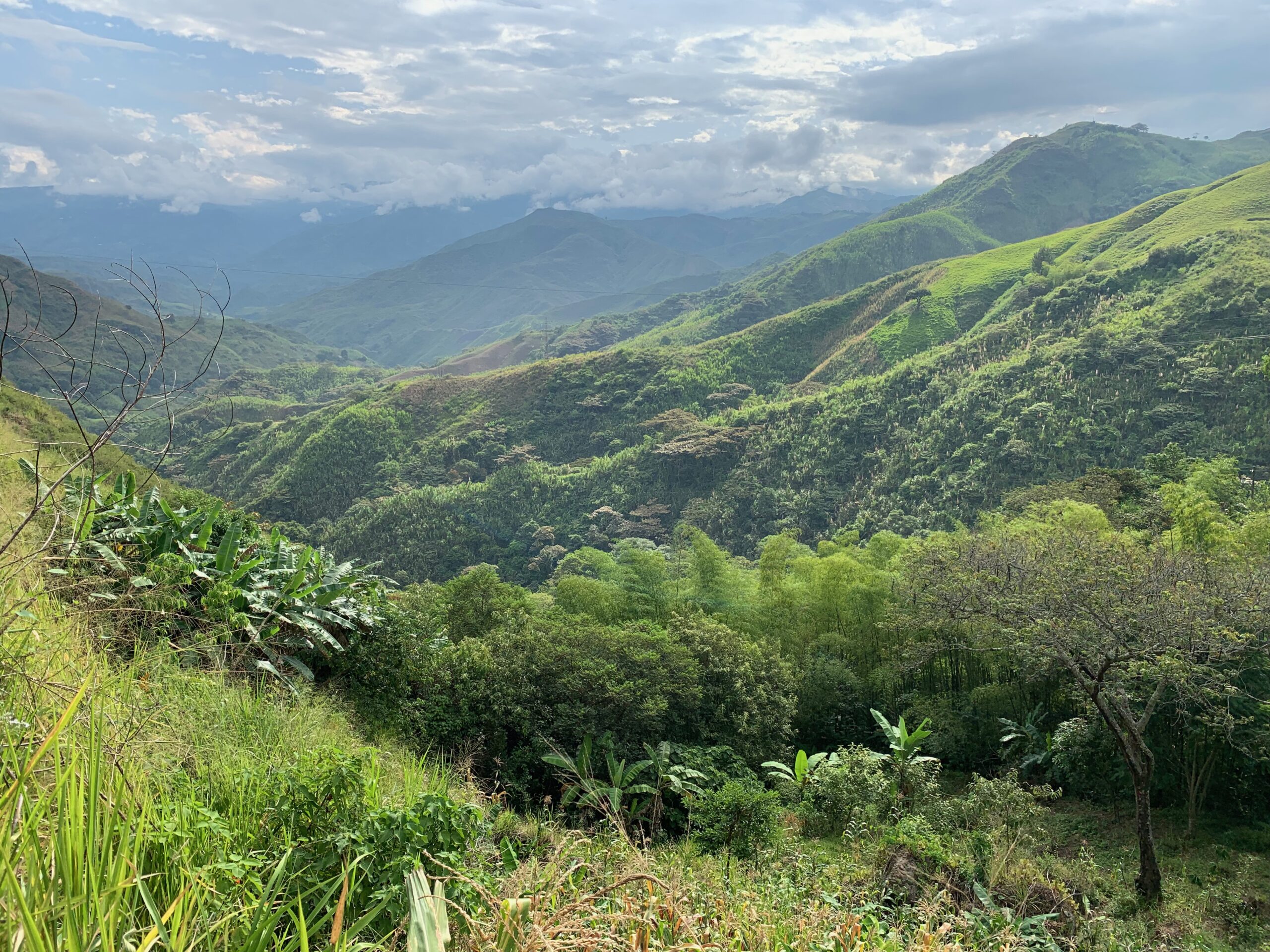
For much of the time, the road followed the San Pedro river valley but always riding high on its shoulder, thereby offering stunning views of down below and beyond. Sometimes the landscape was quite Alpine and cultivated; other times tropical with incredibly dense growth, including bamboos that appeared about 40m tall. A lot of the time, the sides of the mountains were eaten away by steep-sided gullies with pointed ridges, one after another running along the whole flank of the mountain.
I had been warned well in advance about landslides along this part of the Pan American and, when I came across the first example, it lulled me into a very false sense of security. The first indication something wasn’t right was the queue of trucks that appeared about 25 kilometers south of Rosas. It was a long, a very long, line of lorries stopped nose to tail on one side of the road. Bikes were able to ride past on the wrong side of the road because, with few exceptions, nothing was coming from that direction. The head of the queue was stopped at a toll plaza, 22kms south-west of Rosas and police were everywhere. But it was clear that they had no problem with bikers going up the outside and slipping through the barriers.
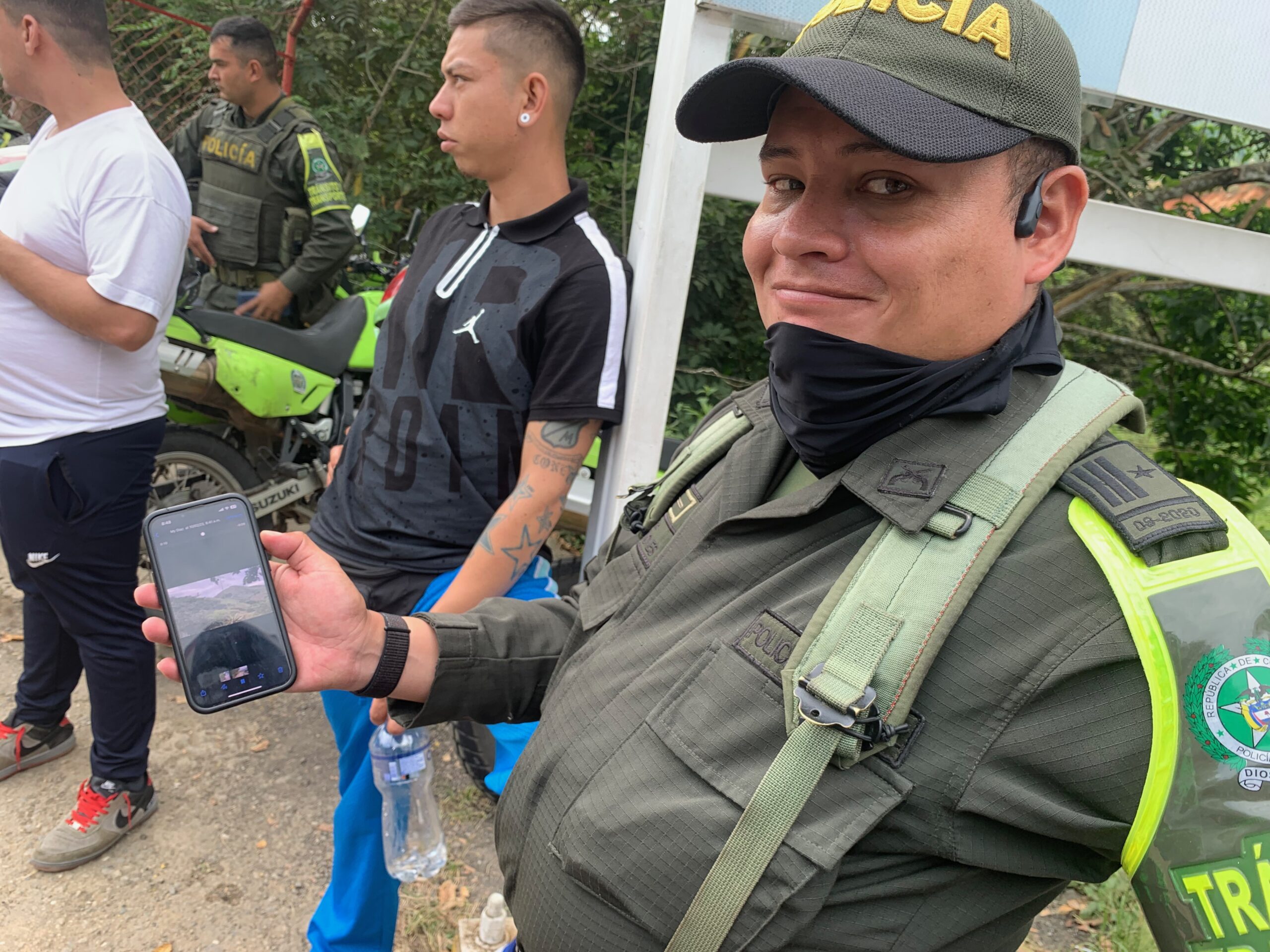
I asked one of the policemen why the vehicles were stopped. He pulled out his phone and showed me some pictures of what was up ahead — bite sized chunks of collapsed road but you could see how two wheels would get through easy enough. Yes, you can pass, he said, and so I rode on. After maybe a kilometre, this scutty little mound of clay and rocks, no more than a wheelbarrow full, appeared on the left and I thought ‘Jazus, is that what they’re worried about?’
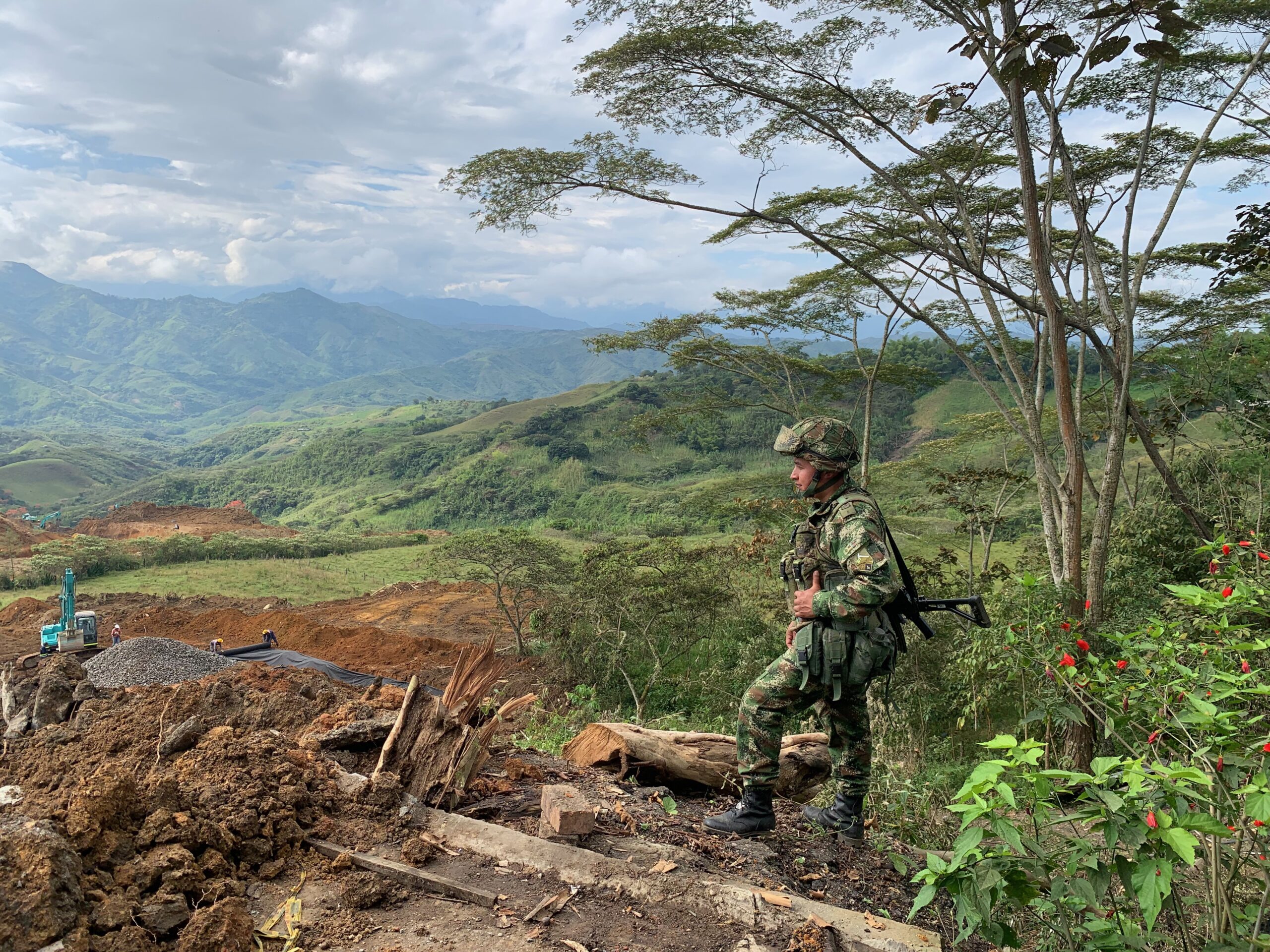
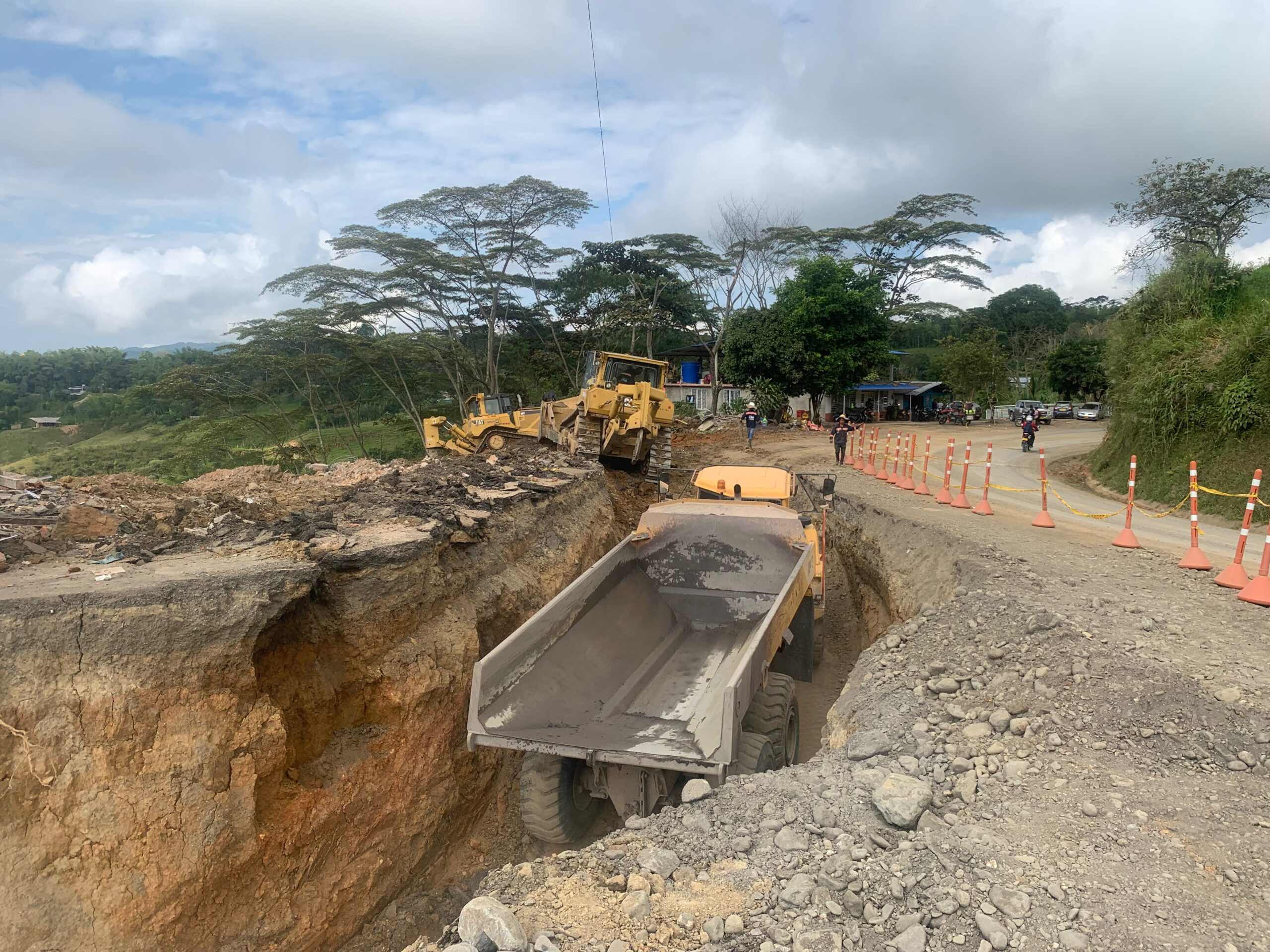
But eventually, a really big hole did appear: like a giant of the mountains had taken a bite, as though out of a slice of cake, the road had simply ceased to be on one side — a whole semicircle was gone. Workmen and huge earth movers were busily creating a new road, one that would itself plunge down into the valley before rising again to reconnect with the existing road. Again, all this was passable, but it was noteworthy that the road builders were all working under heavily armed military guard. The now largely defunct rebel terrorist group, the Farc, used to be active here but since the 2016 peace agreement have been replaced by a motley collection of dissident paramilitaries and drug gangs. I asked a contractor how long it would take to build the new road — three months he said. Which made me wonder were the trucks in the queue really going to wait that long?
I rode on, thinking again that maybe that was it.
And then, around a corner, a vista opened up revealing the true nature of the problem: the side of an entire mountain had shifted, obliterating settlements and making the Pan American Highway impassable for what looked like a lot more than 500 meters. I guess the only four-wheeled vehicle that could traverse the mess would be a Land Rover, and not much else.
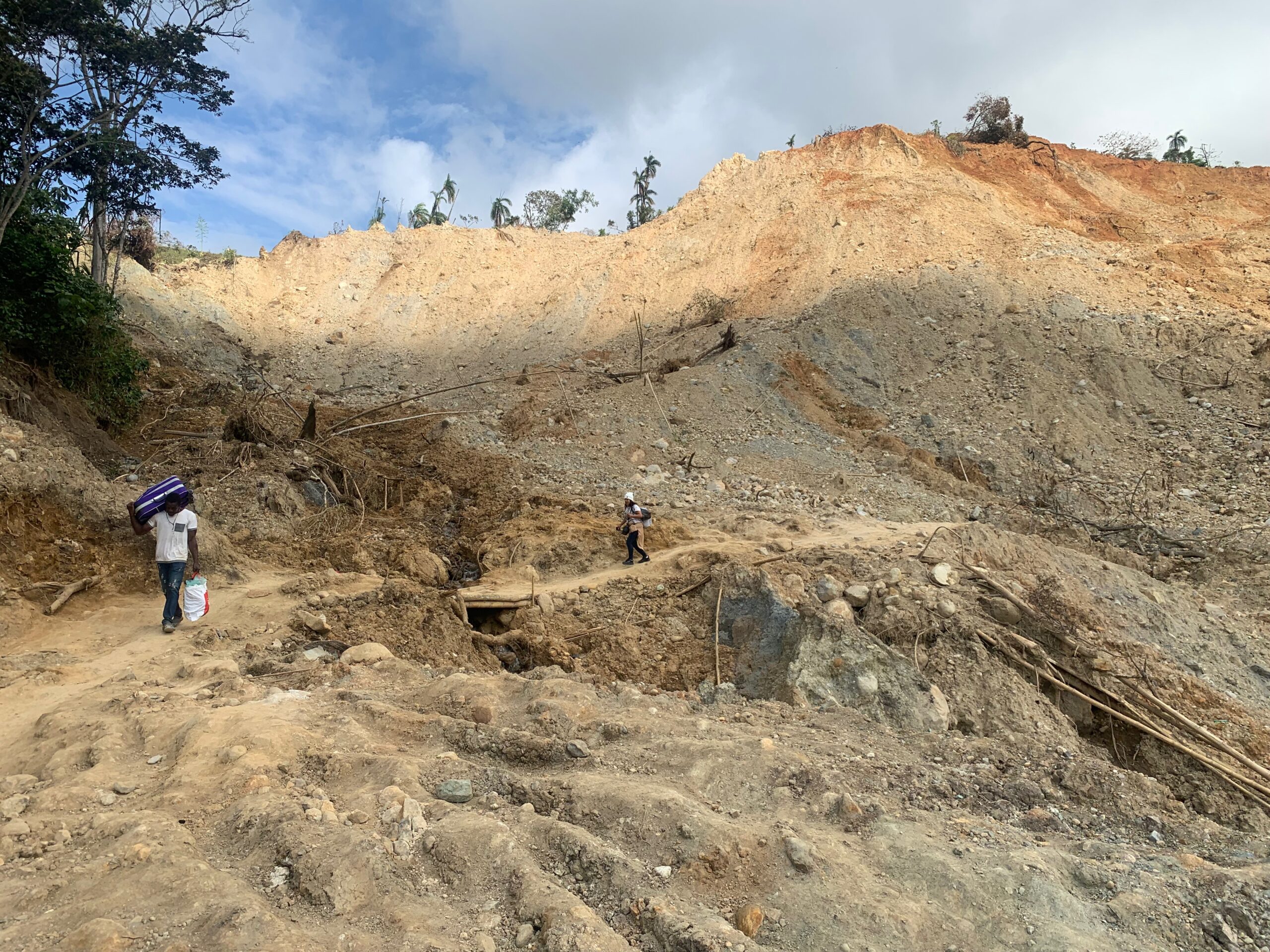
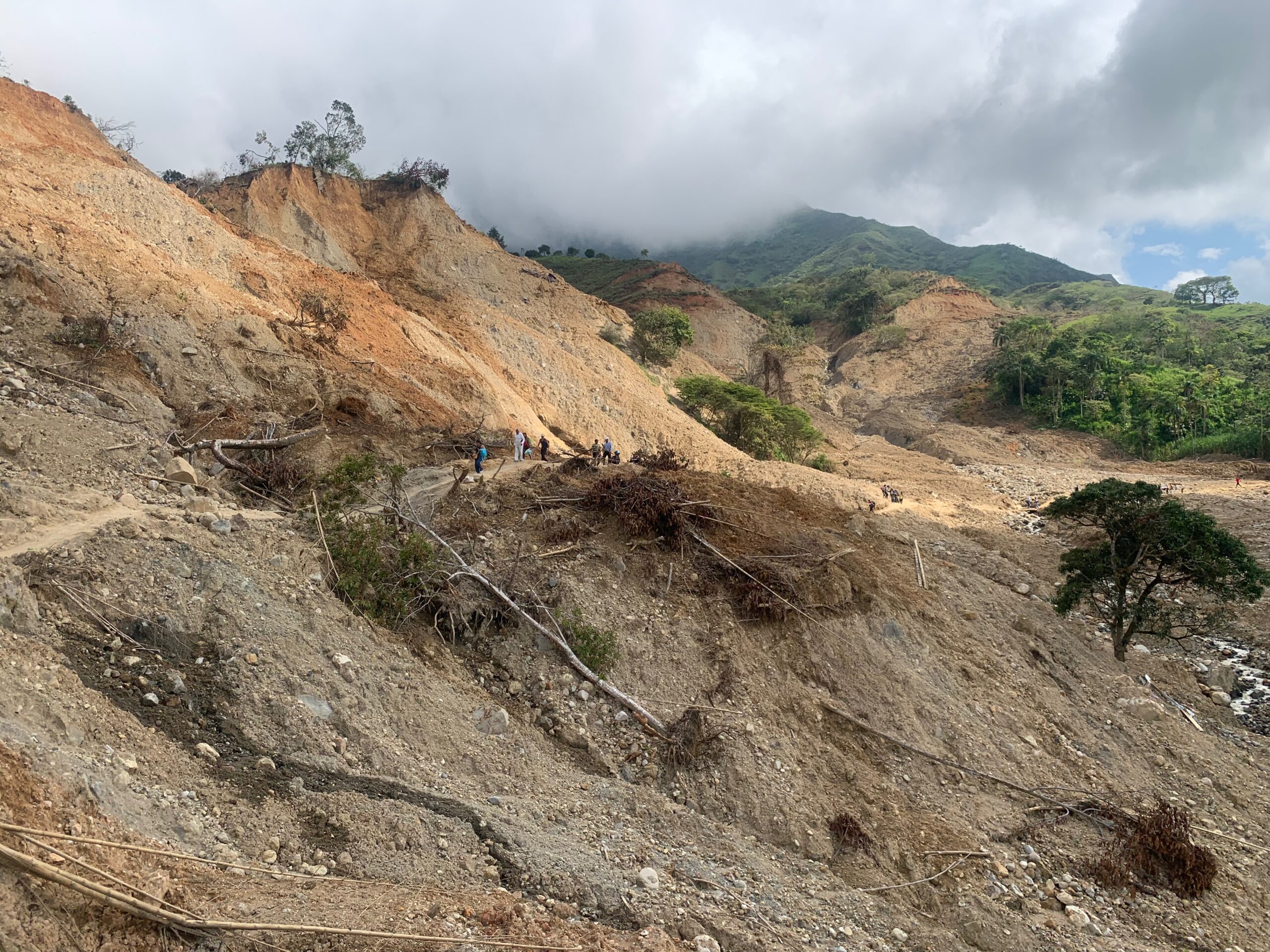
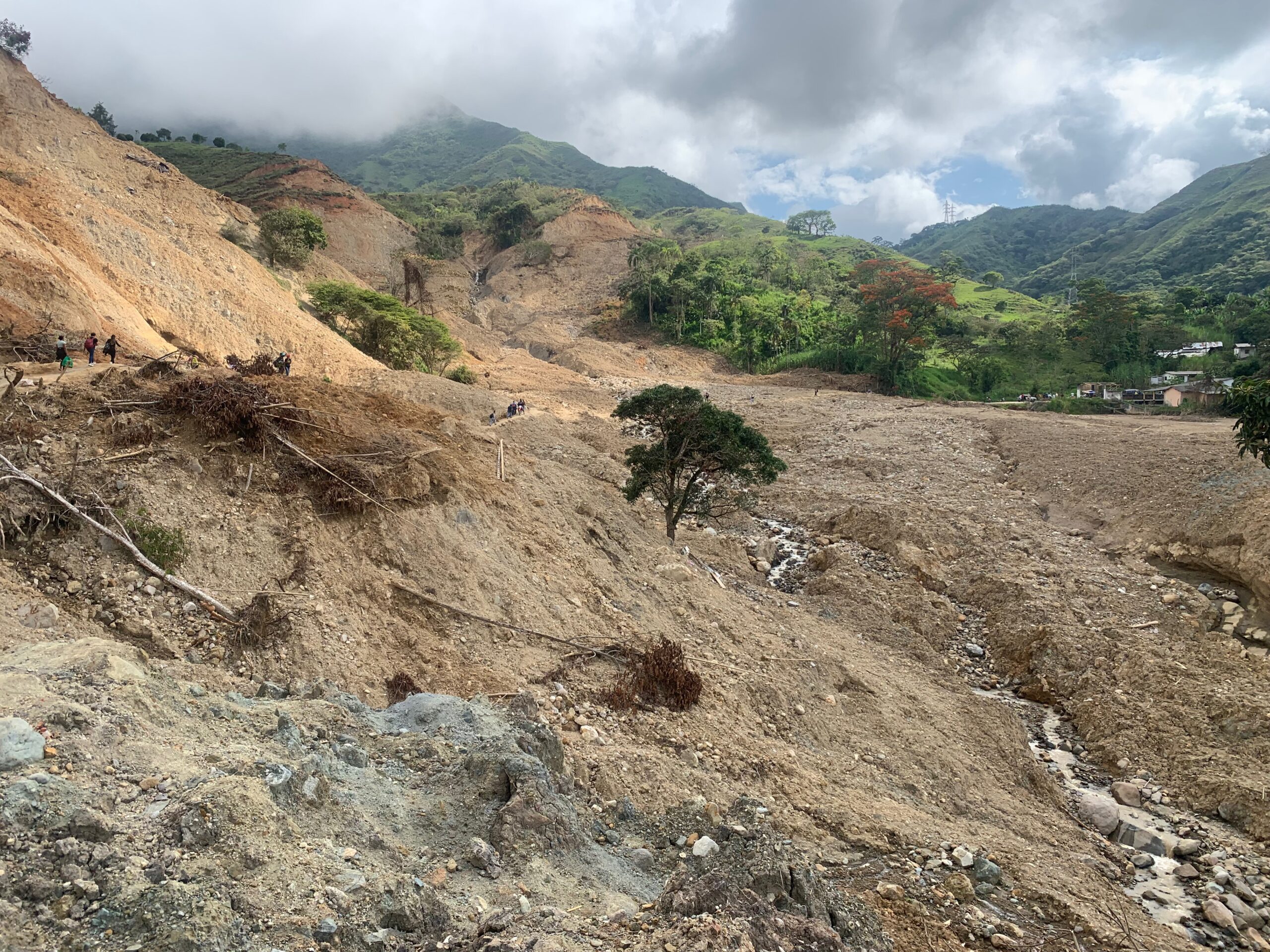
I stopped, dismounted, looked in some disbelief and thought “What do I do now?” At that moment, several young men rushed towards me, offering their services in getting across. I hesitated. Like, did I hesitate? The trail across was maybe two feet wide at most but frequently shrank to eight or 10 inches. It was anything but smooth: it had rocks, big rocks, jutting up from the mud — no problem if you are on foot and able bodied or even riding a light motorbike, like a 125cc or even a 250. I was on a 1,200cc monster weighing at least 300 kilogrames and, because of that, quite difficult to maintain an upright balance except on a reasonably smooth surface — not perfect but not the cone of Croagh Patrick either — and not with fully laden panniers, bags on top of them and a rucksack.
The lads were pressing: we’ll help you, they said; leave your luggage on the bike, that way we can keep you upright (that filled me with confidence); go on — do it!
It was at that moment that the pallbearers appeared and I had to wait. But, once they passed, I went for it — partly out of a sense that I’d come this far, so I’ve nothing to lose; partly out of a sense that I can’t just give in, and partly, I suppose, out of a sense that I wasn’t going to limp off, defeated and with my tail between my legs without even trying. And sure, what could possibly go wrong? Well, I cannot think of a more arduous, strenuous, or testing 15 or 20 minutes on a motorbike. Even the fact that I fell just once (and thought I had broken my leg too, instead of having merely a horrendous bruise) was down entirely to my lack of skill and not the efforts of the lads, who were absolutely heroic. Several times I stalled on really steep inclines, especially where they narrowed to mere inches at the top and I had no sense of which direction the trail went after the crest. I screamed curses at myself in annoyance but the lads kept me steady . . . and upright.
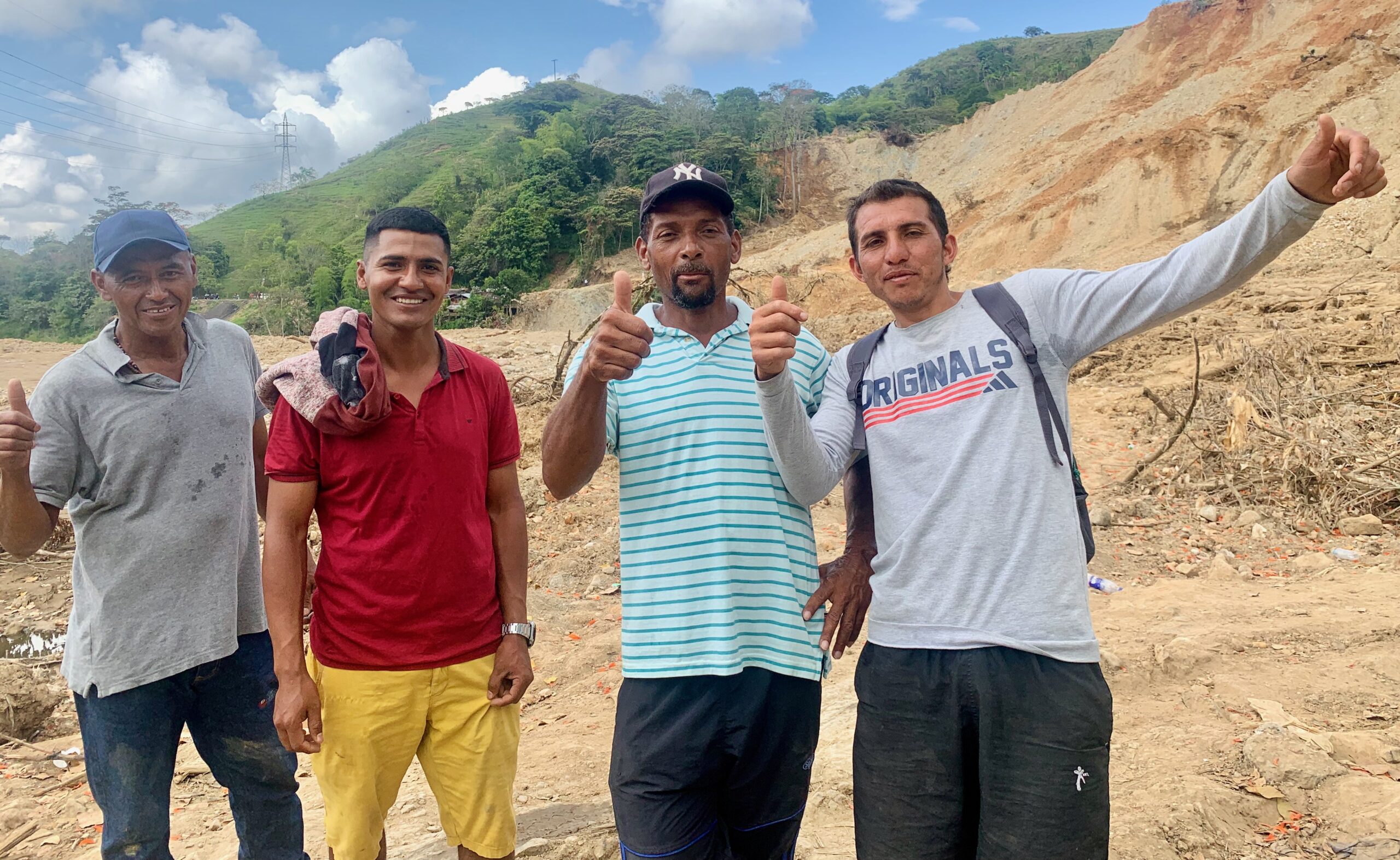
I got to the other side, drenched in sweat from head to toe and barely able talk, let alone stand. We had agreed no price for their help beforehand and when I asked what did I owe them, they sort of shrugged, a shrug that said, well, whatever you think yourself. Very Irish! I opened my wallet and all I had was 150,000 pesos — about €30. So, a little more than €5 each — a mean reward, though not intentionally so; it was literally all I had in the wallet. So much so, that when I stopped at a roadside cafe a few hundred meters on, I pulled out what coins were in my pocket and asked the lady for whatever liquid she had, but that was all the money I had. She smiled and gave me a small bottle of water.
I sat there, looking across the beautiful valley, sweating like a pig and barely able to move.
After a little while, there was a kerfuffle as lots of people with name tags and ID lanyards appeared, along with police and soldiers. A man was the centre of attention. He shook hands and then stopped to chat to what was obviously a press photographer. The pair of them perused pictures on the photographer’s camera. The man was wearing a white shirt and a baseball cap with the word POLICÍA on it and so I assumed, not reasonably, that he was probably a senior police officer, maybe a regional commander.
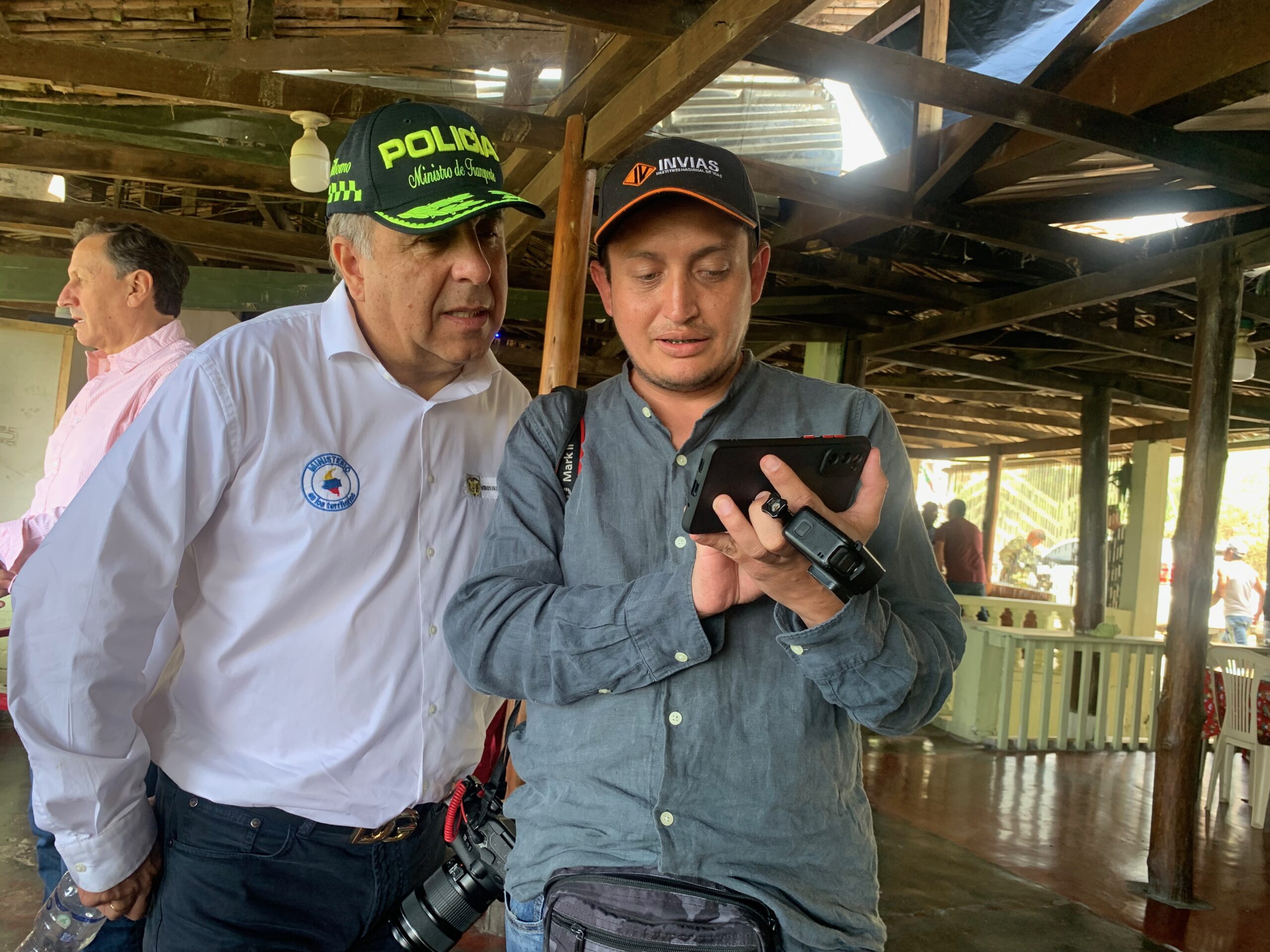
I took pictures of the pair of them and after a while, the man shook my hand. I said who I was, where I was from and what I was doing.
“Thank you for coming to my country”, he said. “It’s very beautiful, yes?”
I said, yes it was, and he said he hoped that I would come back again. He pointed to the hills on the other side of the valley and said: “There are some really good roads over there. You should try them.”
And with that, he was off, down towards what I had just come through. A pleasant fellow, I thought. Who was that, I asked one of the lanyard wearers.
“That’s Guillermo Reyes, the Minister for Transport,” they said.
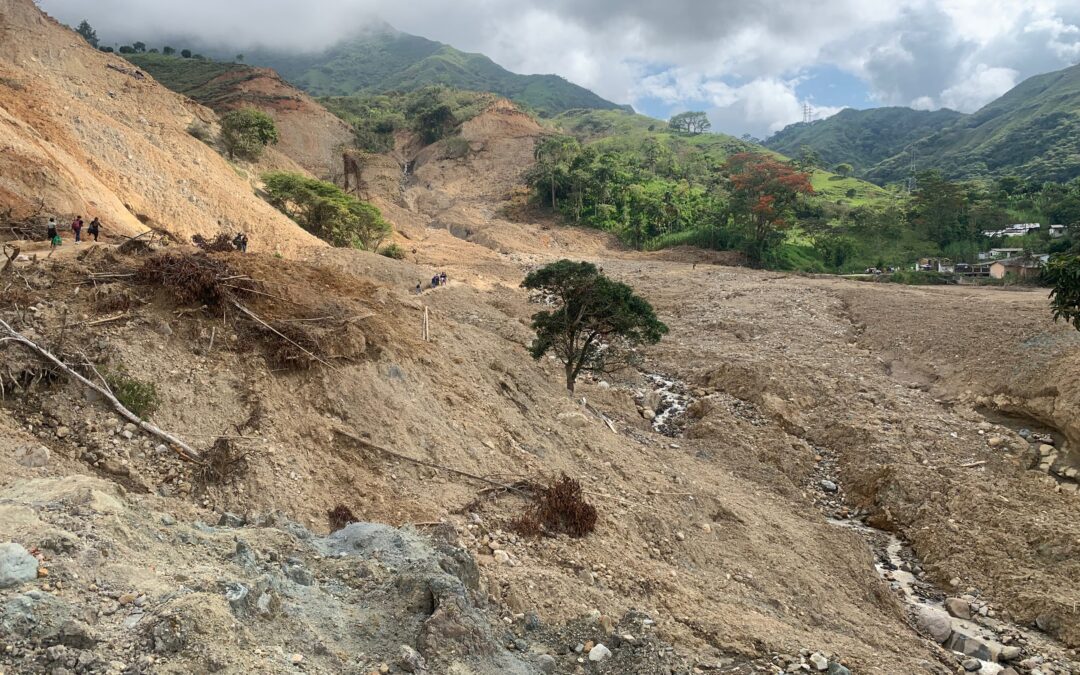
Great piece. Well, you did go looking for adventure! 🙂
A great tale to relate over a pint or three of Guinness. Well written!